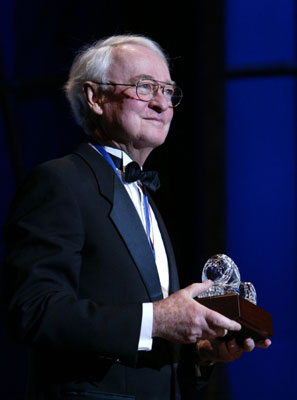
When I first ran for mayor of New York City in 1989, I lost the race. I realized afterward that if I wanted to run again and win—and I planned to win—I needed the equivalent of a graduate degree in how to turn around one of the largest cities in the world. I began to meet with experts in all areas, from all political spectrums, and to take the best of what I learned so that I could help reshape the city I loved.
I was especially interested in law enforcement. I had grown up with police officers and pored over issues of Spring 3100, the New York City Police Department’s in-house magazine, as a child. In the years since, I’d noticed that police officers had become better equipped and better trained and were solving crimes more intelligently than ever before. So why wouldn’t the crime rate drop? New York tried adding more beat cops and running social programs to keep at-risk youth out of gangs; not one of these steps made a dent in the increasingly appalling crime statistics in a very dangerous Big Apple.
In the early days of Rudy University, we met with George Kelling, a senior fellow at the Manhattan Institute, who, with James Q. Wilson, had written an article called “Broken Windows” in the March 1982 issue of The Atlantic Monthly. I had worked closely with Wilson in 1981, when he was cochair of the Task Force on Violent Crime and I was the associate attorney general. In New York, during the 1980s and 1990s, local government seemed to have conceded defeat. The city would actually put up stickers of plants and venetian blinds in the windows of abandoned buildings to disguise the decay. But Wilson had a revelation about crime: focus on the small crimes, such as littering, and keep neighborhoods clean and free of signs of disorder, such as broken windows in a building. The big idea was this: if the neighborhood looks as if someone is watching and maintaining order, it is far more likely that order will prevail. A neighborhood that is clean and well-ordered sends a signal to criminals and citizens alike. Instead of putting up stickers to hide the decay, Wilson’s theory says that you should remove the decay—and that this will save the neighborhood.
Wilson’s idea was a revelation and a reversal of the conventional wisdom up to that point. The dominant liberal theories told us that if we provided more social services to the poor, perhaps crime would get better. But Wilson suggested that instead we turn our attention to providing a better and cleaner place to live, raising the expectations of the community by improving the quality of life—and that then crime would decline.
When I became mayor in 1993, I couldn’t wait to test Wilson’s theory. I began, with police commissioner Bill Bratton, to focus on the squeegee guys who disturbed and frightened visitors to the city, wiping down their windshields and demanding payment. We had assumed that there were hundreds but found that in reality there were just a handful. We moved them off the streets, and there was an immediate feeling that low-level criminals were no longer in control and that New York City was livable again.
With my new team in place, we decided to use deputy police commissioner Jack Maple’s Compstat, a system that could detect patterns in crime. This became the other piece of the puzzle; it allowed us to implement Broken Windows theory. Beat policing hadn’t been working because the beats had become predictable. With Compstat, we could review each night’s data the next morning and deploy police officers accordingly. We knew from day to day exactly what was happening where in the city, and we stopped more crimes from occurring. Rather than responding to a 911 call after a crime occurred, we learned to stop a crime wave before it began to affect the quality of life in a community noticeably. We were able to be proactive rather than reactive in the fight against crime.
New York City’s decrease in crime is already legendary, and similar drops have occurred in many cities, thanks to Wilson’s theory. Los Angeles, Austin, and Philadelphia, to name a few, use Compstat. Harvard University did a major study of the Broken Windows theory in Lowell, Massachusetts, in 2005, and concluded that it worked.
The loss of James Q. Wilson is a loss to us all. He was that rare academic whose ideas could be put into action and improve the quality of life. His Broken Windows theory changed the face of modern policing. Wilson’s ideas have been borne out by studies and are now taught in universities. The greatest evidence of his success surrounds us—a resurgent city and thousands of New Yorkers who are alive today because of his radical solution to a tidal wave of crime.




